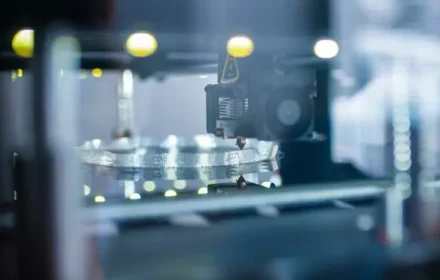Introduction
Signal noise is a silent killer for industrial control systems. It can turn a perfectly good RX3i DC input into a source of unreliable data, leading to costly downtime and frustrating troubleshooting. As someone who’s spent 15 years in industrial automation, working with brands like Bentley Nevada, GE, and Rockwell Automation (formerly AB), I’ve seen firsthand how crucial it is to get this right. Don’t let noise degrade your system’s performance.
Understanding the Threat: What is Signal Noise?
Signal noise isn’t just a nuisance; it’s an insidious force that directly impacts the accuracy and reliability of your RX3i DC inputs. Think of it as unwanted electrical interference that contaminates the clean, vital signals carrying information from your sensors to your PLC. This interference can come from a myriad of sources within an industrial environment: powerful motors, variable frequency drives (VFDs), welding equipment, even simple power cables running parallel to your signal lines.

The Consequences: How Noise Damages Your RX3i Inputs
When noise infiltrates your RX3i DC inputs, the consequences range from minor annoyances to catastrophic failures. At best, you might see erratic readings or intermittent fault alarms that lead to unnecessary investigations. At worst, noise can cause false positive or negative readings, leading to incorrect process control decisions, equipment damage, or even safety hazards. Imagine a pressure sensor input fluctuating wildly due to noise, causing a pump to cycle on and off erratically. This isn’t just inefficient; it’s a direct threat to your operational integrity. From my experience, a significant portion of “phantom” issues in control systems often trace back to unaddressed noise problems.
Your First Line of Defense: Effective Shielding
Shielding is your primary weapon against external electromagnetic interference (EMI). It acts like an electrical cage, diverting noise away from your sensitive signal wires. For RX3i DC inputs, this typically means using shielded twisted-pair cables.

Twisted Pairs
The twisting of the wires helps to cancel out electromagnetically induced noise in the cable itself. The more twists per foot, the better the noise rejection.
Cable Shielding
This is usually a foil or braided layer around the twisted pairs, connected to ground at one end. This shield provides a low-impedance path for noise currents to flow to ground, preventing them from inducing voltage in your signal lines. Crucially, ensure proper grounding of the shield. Improperly grounded shields can become antennas, actually attracting noise. A good rule of thumb is to ground the shield at the PLC cabinet end only, preventing ground loops.
Boosting Immunity: Smart Filtering Techniques
While shielding blocks external noise, filtering deals with noise that might still make its way into the system or is generated internally.
Capacitive Filtering
Adding capacitors across your DC input terminals can shunt high-frequency noise to ground. These act like tiny short circuits for high-frequency noise, effectively smoothing out your DC signal. Select capacitors with appropriate voltage ratings and a low equivalent series resistance (ESR) for best performance.
Inductive Filtering (Chokes)
Inductors, or chokes, can be used in series with your signal lines. They oppose changes in current, thus blocking high-frequency noise while allowing your desired DC signal to pass through. Combining inductors with capacitors creates a more robust LC filter.

Software Filtering
Don’t overlook the power of your PLC’s software! The RX3i often has built-in input filtering capabilities that you can configure. This allows the PLC to average readings over a short period, effectively ignoring transient noise spikes. While not a substitute for hardware solutions, software filtering provides an extra layer of protection and can be fine-tuned without rewiring. I’ve often used this to great effect in applications where physical space for hardware filters was limited.
Best Practices and Unique Insights
Beyond these core techniques, here are some critical considerations based on my operational experience:
- Separation of Wires: Always maintain physical separation between power cables and signal cables. Run them in separate conduits or cable trays whenever possible. A minimum distance of 12 inches (30 cm) is a good starting point, but more is always better.
- Dedicated Grounds: Ensure your instrument grounds and PLC grounds are robust and properly tied together, ideally to a single-point ground reference within your control panel. Avoid noisy ground paths.
- Ferrite Beads: For stubborn high-frequency noise, consider adding ferrite beads around your signal wires. These inexpensive components are excellent at dissipating high-frequency noise as heat.
- Systematic Troubleshooting: When noise issues arise, adopt a systematic approach. Start by checking grounds, then shielding, and finally, consider adding filters. Use an oscilloscope to visualize the noise on your signals – it’s an invaluable tool for diagnosing these invisible problems. My unique insight here is to prioritize noise reduction at the source whenever possible. If a VFD is the culprit, ensure it’s properly grounded and its motor cables are shielded. Trying to filter massive amounts of noise downstream is like trying to empty a swimming pool with a teacup.
Conclusion: Invest in Reliability
Ignoring signal noise is a recipe for operational headaches and financial losses. By implementing proper shielding and filtering techniques, you’re not just mitigating a problem; you’re investing in the long-term reliability and accuracy of your RX3i DC inputs. This proactive approach saves you time, money, and stress in the long run.
Ready to fortify your RX3i system against noise? Explore our range of high-quality shielded cables, filters, and grounding solutions designed for industrial environments in World of PLC Limited.
| Model | Title | Link |
|---|---|---|
| IC694MDL655 | GE Fanuc PACSystems RX3i Positive/Negative Logic Input Module | Learn More |
| IC695ALG704 | GE Fanuc PACSystems RX3i Analog Input Module | Learn More |
| IC695ALG708 | GE Fanuc PACSystems RX3i Analog Input Module | Learn More |
| IC694MDL931 | GE Fanuc PACSystems RX3i 8-point Relay Output Module | Learn More |







